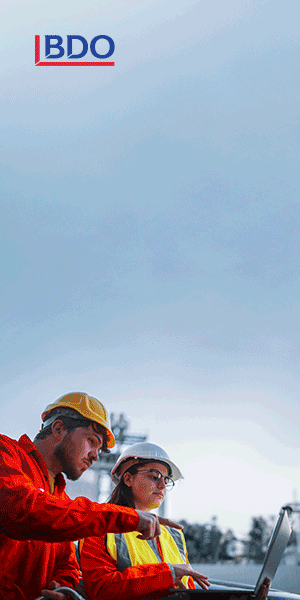Gearing up for growth: CommBank Manufacturing Insights 2024

Sponsored
Most Australian manufacturers and distributors are striving for higher output in 2024. However, CommBank’s new report shows that achieving it will rely on overcoming ongoing issues relating to costs, customers and capacity and finding new pathways to productivity.
Performance drivers and outlook
Steady growth outlook buoys cautious optimism
Despite economic uncertainty and rising costs, most manufacturers and distributors grew production volumes and revenue at least modestly in 2023. In addition, 51% of the industry is operating with a capacity utilisation rate of 85% or above. From here, a steady growth trajectory is expected to continue, and 83% have some degree of confidence in business conditions in the year ahead.
Expectations for slight or significant increase in 2024
- 56% Capital expenditure
- 49% Employee numbers
- 74% Fixed and variable costs
- 65% Revenue
- 64% Profit margins
Adapting to challenges and change
In pursuit of their growth targets, manufacturers and distributors will be navigating a range of ongoing challenges. The market and economic forces pushing up costs and competition are expected to impact the industry most in the next 12 months.
To effectively adapt to change, manufacturers and distributors are mounting a range of strategies. This includes planning initiatives and investments to optimise operations and improve productivity, competitiveness, and supply chain resilience.
| Costs and inflation | Customer-led change | Productivity |
Moderate to high impact issues in next year
|
Moderate to high impact issues in next year
|
Top barriers to productivity
|
Top responses to inflationary pressures in next year
|
Top responses to changing customer expectations
|
Top tactics
to improve productivity
|
Enabling business outcomes
Technology as a productivity accelerant
Just over 8 in 10 manufacturers and distributors plan to increase technology investment in the next 12 months. The top-rated goals of adoption are enhanced productivity and financial performance, as well as improving the employee and customer experience.
Highest impact technologies in next three to five years (ranked in top three)
- 40% Supply chain integration platforms
- 30% Track and trace for supply chain visibility
- 28% Artificial intelligence and machine learning
- 23% Intelligent automation
Boosting digital adoption and readiness
With a lack of expertise seen as a barrier to digital adoption, most manufacturers and distributors run in-house training to reskill and upskill staff. Training is also being used to strengthen business’s cyber defences, but keeping hardware and software up-to-date is most common.
- Preparing people – 56% are conducting internal training to uplift digital skills.
- Cyber protection – 38% are ensuring software and hardware is updated.
Advancing sustainability and business outcomes
Manufacturers and distributors are progressing their sustainability journeys, targeting business outcomes including operational efficiencies (51%), reduced costs (48%) and a competitive advantage (41%). Among the barriers to delivering sustainability initiatives, financial constraints are the top-rated.
- Sustainability journey – 81% of businesses have implemented at least some sustainability initiatives.
- Renewable energy – 33% of business’ energy mix is currently supplied by renewable sources.
- Fastest-growing initiative – 47% are planning to adopt sustainable procurement practices
Access more supply chain insights
This provides just a snapshot of the findings from the CommBank Manufacturing and Supply Chain Insights Report 2024, with the full report examining these and other trends in depth.
This includes:
- Performance indicators: Financial and operational performance and outlook across manufacturing and distribution sectors.
- Productivity tactics: Productivity enablers and detractors, and areas earmarked for capital investment.
- Digital opportunities: Challenges and opportunities of emerging technologies such as AI, and cyber security initiatives.
- Sustainability imperatives: Existing and planned sustainability initiatives and the impact of the changing regulatory landscape.
About the research
The research is based on a survey of 464 manufacturers and distributors across Australia conducted in February 2024. The research examines current and future financial and operational performance drivers to support decision-makers as they develop their growth strategies.
To read the full report and access additional resources, case studies and other information visit CommBank.com.au/Manufacturing.
Things you should know:
The CommBank Manufacturing Insights (the research) has been published for general informational purposes only. As it has been prepared without considering your objectives, financial situation or needs, you should, before acting on the information, consider its appropriateness to your circumstances and if necessary seek the appropriate professional advice. Any opinions, conclusions or recommendations are reasonably held or made, based on the information available at the time of each publications compilation, but no representation or warranty, either expressed or implied, is made or provided as to the accuracy, reliability or completeness of any statement made. Any opinions, conclusions or recommendations set forth are subject to change without notice. Any projections and forecasts are based on a number of assumptions and estimates and are subject to contingencies and uncertainties. Different assumptions and estimates could result in materially different results. The Commonwealth Bank does not accept any liability for loss or damage arising out of the use of all or any part of the research.
The survey was undertaken by Fifth Quadrant on behalf of the Commonwealth Bank and the analysis was undertaken by Fifth Quadrant and the Commonwealth Bank.
Commonwealth Bank of Australia ABN 48 123 123 124 AFSL and Australian Credit Licence 234945
Topics Manufacturing News
@aumanufacturing Sections
Analysis and Commentary Awards Defence Manufacturing News Podcast Technology Videos









